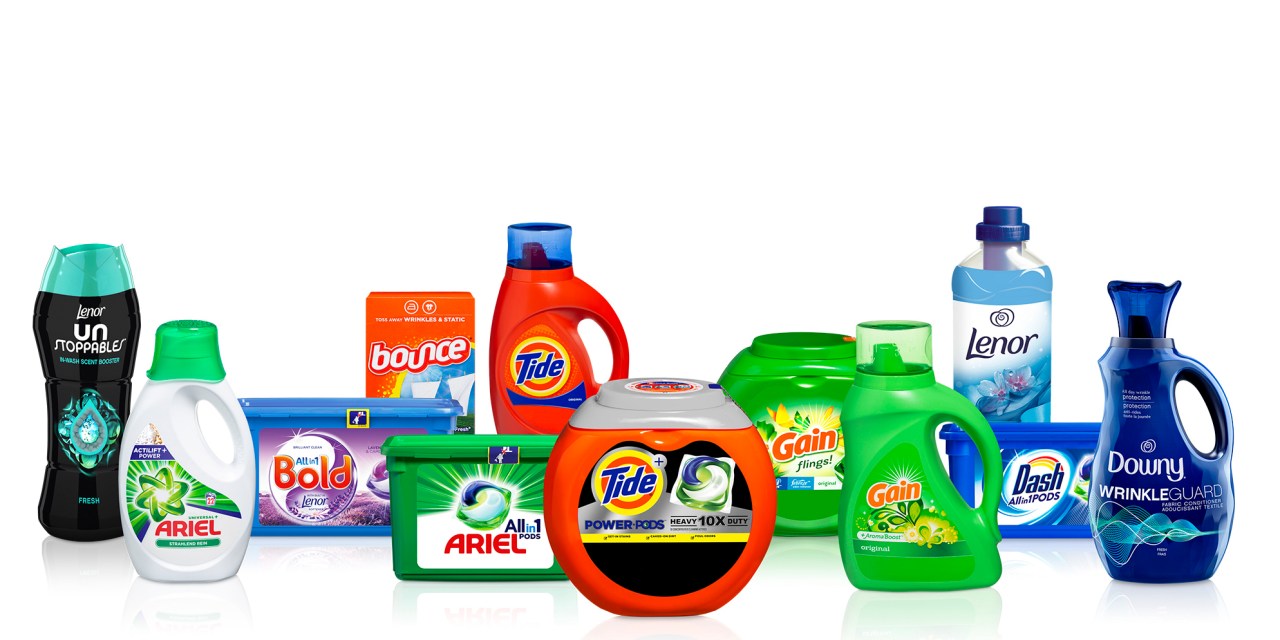Procter & Gamble expects inflation to continue impacting profitability

In 2022, inflation is proving to be a never-ending battle for CPG brands like P&G.
On Wednesday, Procter & Gamble reported its fiscal third-quarter earnings, beating projections due to recent price hikes on brands like Tide and Crest. The company said it experienced its strongest sales in about two decades, reporting a net income of $3.36 billion — up from $3.27 billion the previous year. Procter & Gamble also raised its 2022 revenue growth forecast, from 3% to 4% to the 4% to 5% range — while predicting a $2.5 billion hit in commodities costs. Net sales were $19.38 billion.
Despite historic gains, P&G said that the prices of raw material and freight costs have impacted its margins in the last quarter. On the company’s earnings call, P&G chief financial officer Andre Schulten cited many headwinds, including “the imbalance between supply and demand, geopolitical disruption, the need to disrupt supply chains, higher energy costs due to the war between Ukraine and Russia.” He added that “all of those will continue to put pressure on the cost side.”
Thus far, P&G has been able to offset skyrocketing fuel prices and supply chain disruptions by passing those costs onto consumers. The move is in line with CPG competitors, like Kimberly-Clark and Unilever, which also raised their prices and previewed more increases in the coming year. So far, the strategy has been effective. P&G’s fabric care division, for instance, experienced double-digit sales increase since raising prices on brands like Tide earlier this year. The parent company’s feminine and baby care divisions — which include Always and Pampers — also saw a boost in revenue this past quarter.
In turn, CFO Schulten hinted at more price hikes on P&G products in 2022. “We’ve seen continued cost increases in nearly every type of material we use and in diesel and in natural gas,” he said on the earnings call. “We are offsetting a portion of these cost pressures with price increases and with productivity savings.”
Inflation continues to plague consumers during their shopping trips, making them less loyal to big-name brands by CPG conglomerates as a recession looms. According to a recent Kearney survey, only 22% of consumers said they’re still loyal to their favorite brands, as opposed to discounted competitors.
Katie Thomas, lead at the Kearney Consumer Institute, told Modern Retail that consumers are highly aware of inflation’s impact — both at the gas pump and in the grocery aisle.
That said, Thomas said that shoppers respond differently to price hikes depending on the category. “Food tends to be more resilient to price hikes, while household products and health and wellness are more scrutinized,” she said. P&G’s beauty segment, for example, experienced the slowest sales growth last quarter with an increase of just 3%.
For CPG conglomerates like P&G, Thomas said the pricing strategy needs to be focused on offering value on core products that customers don’t want to give up.
Indeed, with prices rising across consumer goods, shoppers are increasingly switching to cheaper brands. Jean Ryan, senior director of brand strategy & design at private brand consultancy Daymon, said the next year could create more shifts away from national brands.
According to Daymon research, over half of consumers cited saving money as a large influence in their brand selection decision. “We anticipate consumers will turn to private brands as a solution for cost-savings during this time,” Ryan continued. She also pointed to in-house brands, especially ones with major brand affinity, as potential winners over the coming months. “We began to see private band purchasing dynamics increasing faster than total store metrics between February and March,” she said.
For big brands with a global presence, continuing to raise prices could eventually lead to shoppers finding alternatives to popular products like Pampers diapers and Tide pods.
“During inflationary periods, consumers make trade-offs, but they don’t typically trade down across the board,” Kearney’s Thomas said. “They may choose to buy certain items less frequently, consolidate trips, or experiment with lower-price brands.”

